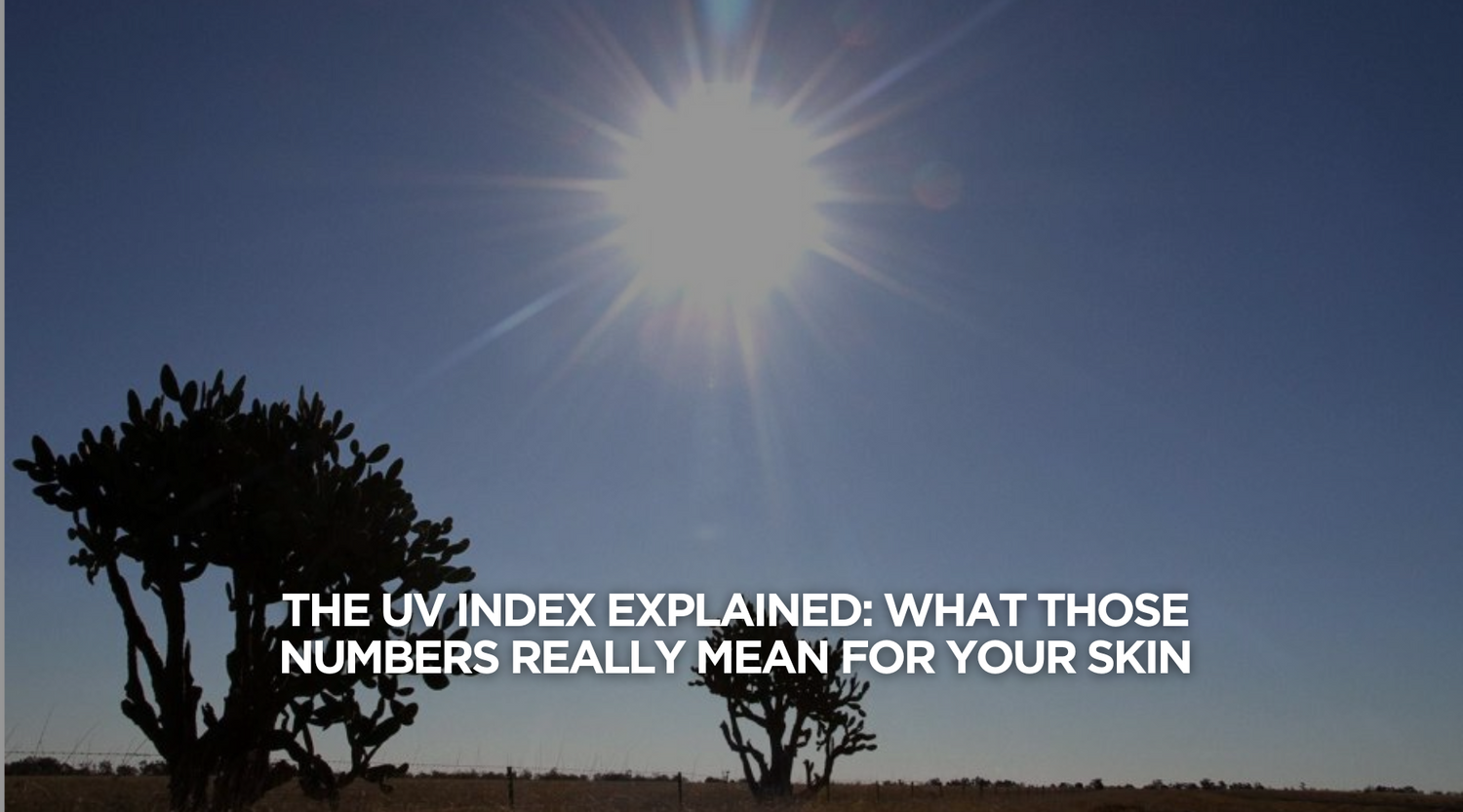Most Australians have seen the UV Index in weather reports, but how many people actually understand what those numbers mean? Whether it’s low, moderate, high, very high, or extreme, the UV Index is a key indicator of how much harmful ultraviolet (UV) radiation is reaching the Earth—and how quickly it can damage your skin.
Given Australia’s harsh sun exposure and high skin cancer rates, understanding the UV Index is crucial for staying protected. In this guide, we’ll break down what the UV Index measures, what each level means for your skin, and when you should be taking extra sun protection measures.
What is the UV Index?
The UV Index (UVI) is a scale that measures the intensity of ultraviolet (UV) radiation from the sun at a given time and place. It was developed by the World Health Organization (WHO), the United Nations Environment Programme (UNEP), and the World Meteorological Organization (WMO) to help people understand their daily risk of sun exposure.
The higher the UV Index number, the greater the potential for skin damage. UV radiation is invisible, meaning even on cloudy days, high UV levels can still be a threat.
The UV Index Scale & What It Means for Your Skin
| UV Index | Risk Level | Sun Protection Advice |
|---|---|---|
| 0-2 (Low) | Minimal risk | Sun protection usually not required, but still a good idea if you have very fair skin or are at high altitudes. |
| 3-5 (Moderate) | Moderate risk | UV exposure is increasing—wear sunscreen (SPF50+), sunglasses, and a hat if outdoors. Seek shade during peak UV hours. |
| 6-7 (High) | High risk | Sunburn can occur in less than 30 minutes. Wear UPF50+ clothing, sunscreen, and seek shade between 10 AM and 4 PM. |
| 8-10 (Very High) | Very high risk | Serious skin damage can occur quickly. Avoid direct sun exposure, wear sun sleeves, a wide-brimmed hat, and SPF50+ sunscreen. |
| 11+ (Extreme) | Extreme risk | Sunburn happens in minutes. Stay indoors if possible, wear full UPF50+ sun protection, apply broad-spectrum sunscreen, and avoid outdoor activity during peak UV hours. |
Why the UV Index is Critical in Australia
Australia has some of the highest UV radiation levels in the world, particularly during summer. This is due to:
- The Earth's Orbit – During the Australian summer, the Earth is closer to the sun, increasing solar intensity.
- A Thinner Ozone Layer – The ozone layer helps block UV rays, but its depletion means higher UV levels reach the surface.
- Clear Blue Skies – Less pollution means fewer UV rays are filtered out, leading to stronger sun exposure even on seemingly cooler days.
This is why skin cancer rates in Australia are among the highest globally, with two in three Australians diagnosed by the age of 70.
When is Sun Protection Essential?
A common misconception is that sun protection is only needed when it’s hot or sunny. However, UV radiation is not related to temperature, meaning you can get sunburnt on cool, cloudy days.
You should wear sun protection whenever the UV Index is 3 or above—which, in Australia, is most of the year!
Even on ‘low’ UV days, if you’re outside for extended periods (e.g., hiking, playing sports, or at the beach), it’s still smart to wear UPF50+ clothing and sunscreen.
How to Stay Protected at Every UV Level
To protect your skin year-round, follow these sun safety tips:
1. Wear UPF50+ Sun Protection Clothing
UPF50+ clothing is your first and most effective line of defence against harmful UV rays. SParms arm sleeves, body shirts, and shoulder wraps provide lightweight, breathable sun protection while keeping you cool.
✔ Blocks 98% of UVA and UVB rays
✔ Cooling fabric technology
✔ Perfect for sports, outdoor work, and everyday wear
2. Apply SPF50+ Sunscreen Every Day
Sunscreen should be part of your daily routine, just like brushing your teeth.
- Use a broad-spectrum SPF50+ sunscreen, like SParms 100% Organic Sunscreen.
- Apply it 20 minutes before sun exposure.
- Reapply every two hours, especially if sweating or swimming.
3. Protect Your Face & Neck
The face, neck, ears, and hands are among the most sun-exposed and often forgotten areas.
- Wear a wide-brim hat instead of just a cap.
- Use a SParms neck gaiter for added protection while keeping cool.
- Don’t forget SPF lip balm to protect your lips from sunburn.
4. Seek Shade & Avoid Peak UV Hours
The sun is at its strongest between 10 AM and 4 PM.
- Stay in the shade whenever possible.
- If outdoors, wear long sleeves, sunglasses, and sunscreen.
- Be mindful of UV reflection from water, sand, and pavement.
Final Thoughts: Stay Sun-Safe All Year
Understanding the UV Index is one of the easiest ways to protect your skin and prevent sun damage. Whether it’s a cloudy winter day or a hot summer afternoon, UV exposure adds up over time—so consistent sun protection is key.
With SParms UPF50+ sun sleeves, body shirts, neck gaiters, and organic sunscreen, you can enjoy the outdoors without worrying about UV damage.
